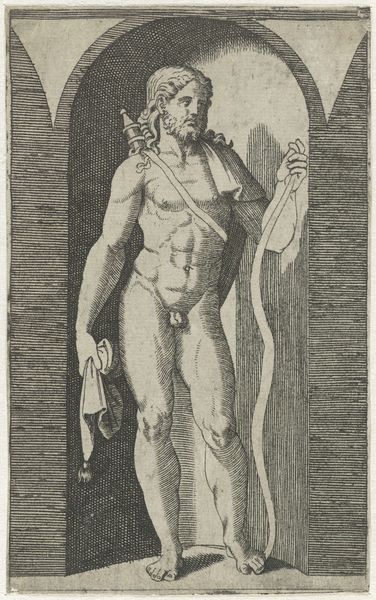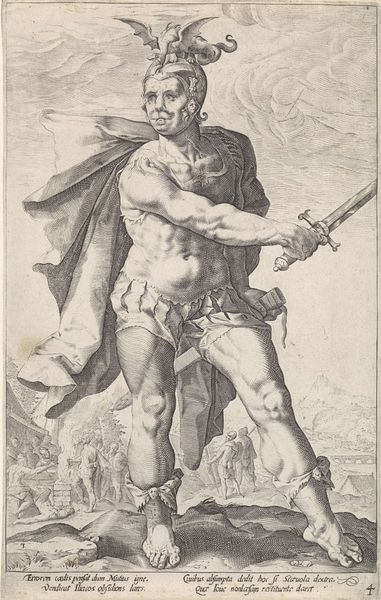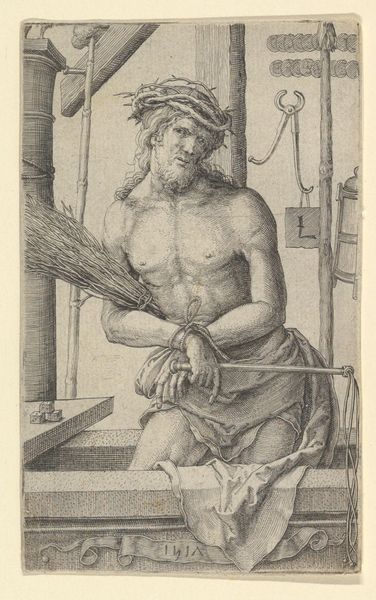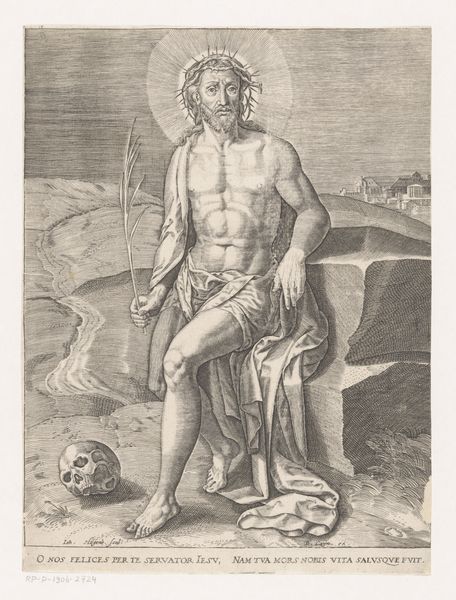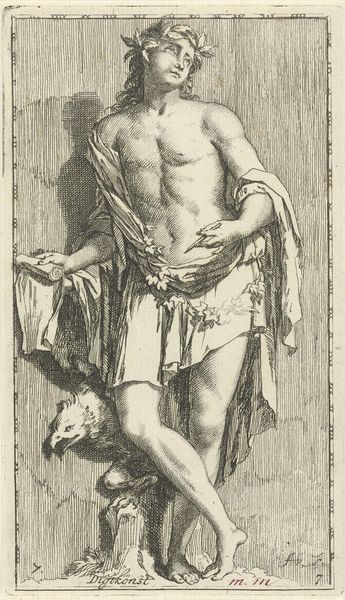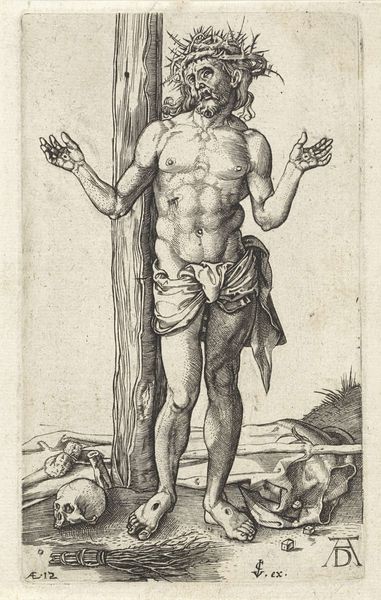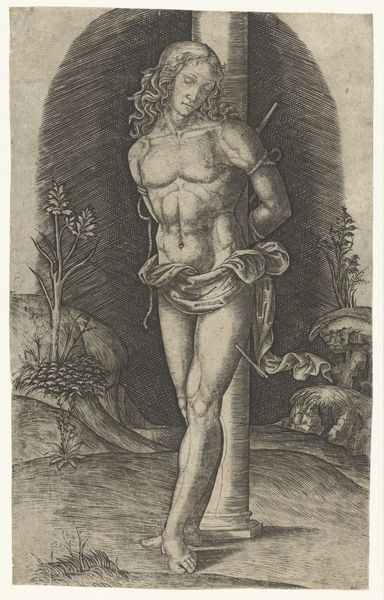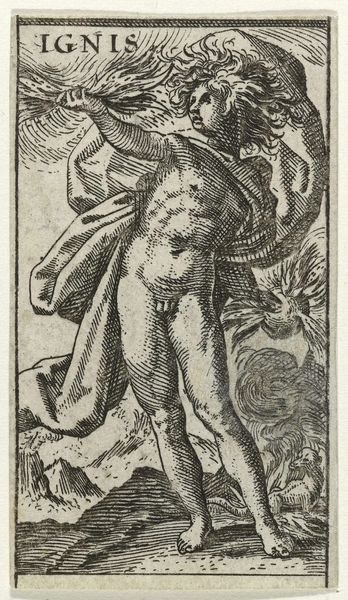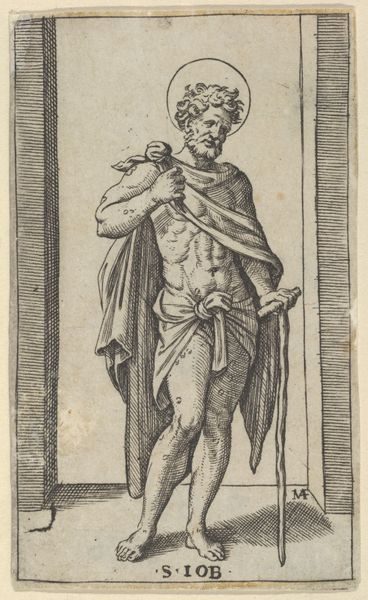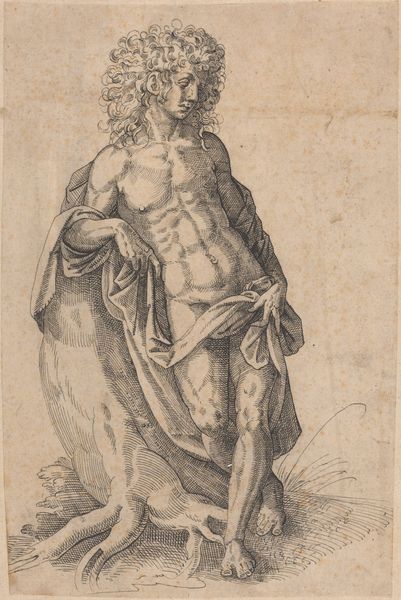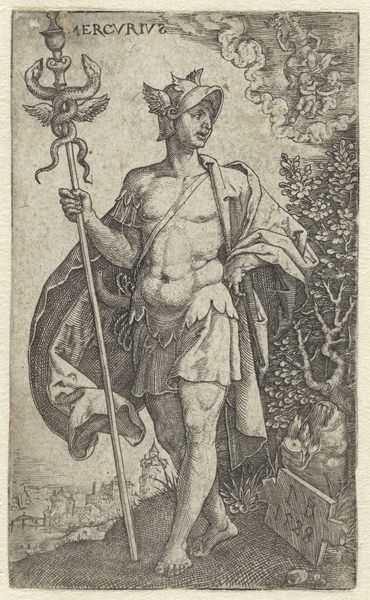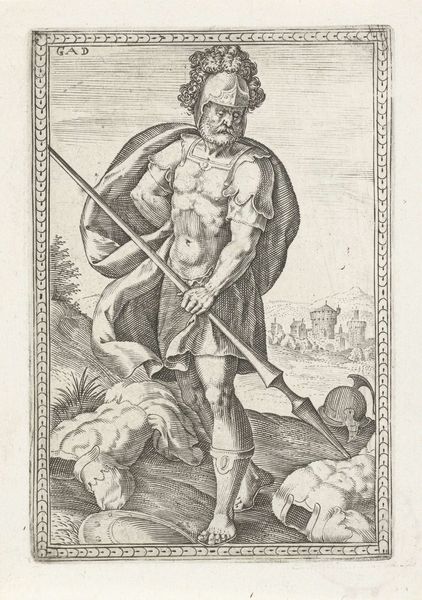
Dimensions: height 128 mm, width 115 mm
Copyright: Rijks Museum: Open Domain
Editor: This engraving, "Man of Sorrows," by Cornelis Anthonisz., dates sometime between 1509 and 1603. It's quite stark, printed in ink through an intaglio process, I believe. What really strikes me is the starkness and repetition of lines creating the illusion of three dimensions in a print; what can you tell me about that? Curator: Consider how the printmaking process here allowed for widespread distribution of imagery. Think about the socio-economic implications: How did this ease of reproduction affect access to religious iconography and the individual's relationship with faith, relative to earlier forms? Editor: I guess before the printing press, religious imagery would have only been available to people who had access to like illuminated manuscripts or the church. The printed version makes religious art available for the consumption of a much broader audience? Curator: Precisely. And consider the material itself. What does the choice of ink, paper, and the very act of repeated pressing and transferring say about labor and the production of meaning? This isn't simply about replicating an image, but embedding labor into something, a process to make widely available. Does that influence your understanding of its sacred nature? Editor: It's interesting to think about labor being built right into something people are supposed to view with a sacred appreciation. I think I appreciate this work now more than when I first started looking at it. Curator: Thinking about it this way allows us to appreciate the true value, not just artistic or historical, but the intersection of all of the steps necessary to produce it.
Comments
No comments
Be the first to comment and join the conversation on the ultimate creative platform.
